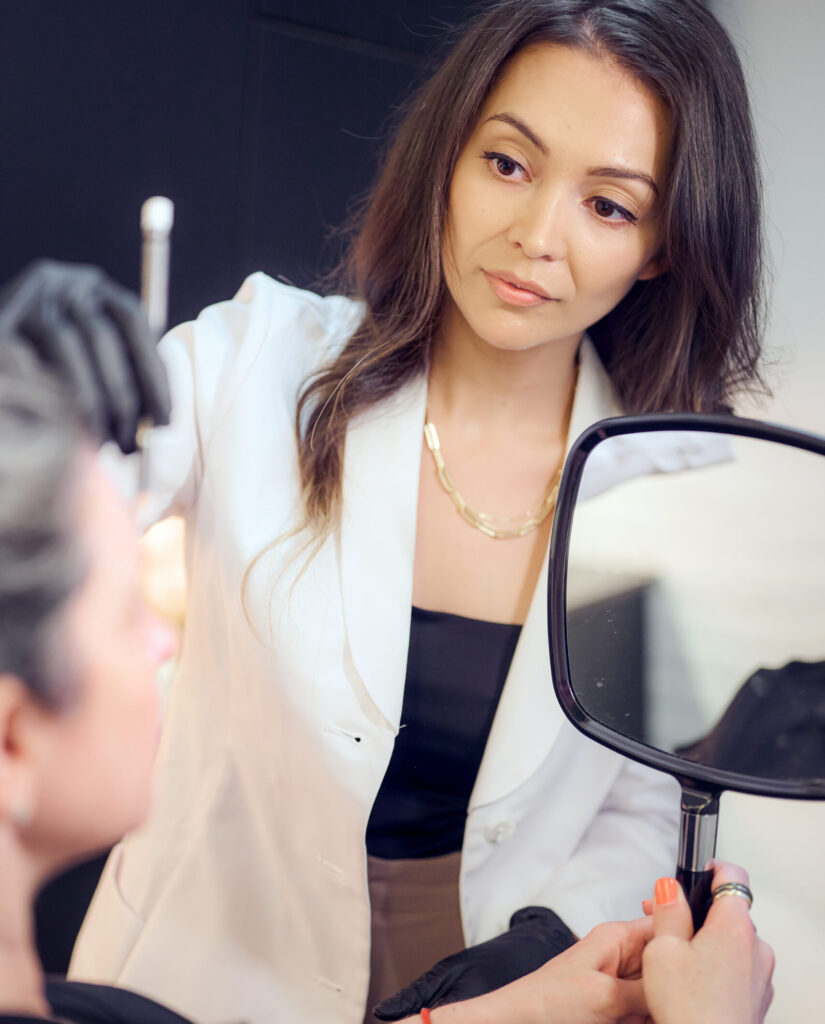Acne is a common skin condition, but not all acne is the same. Hormonal and bacterial acne can often appear similar, making them easy to confuse. However, they have distinct characteristics, causes, and treatment approaches.
Do Hormonal and Bacterial Acne Tend to Look the Same?
Hormonal and bacterial acne can look similar, but there are characteristic differences in terms of location, time of onset, symptoms, and exacerbating factors. Understanding these differences can help in identifying and treating each type effectively.
What is Hormonal Acne?
Characteristics of Hormonal Acne:
- Cyclical Pattern: Hormonal acne tends to follow a woman’s menstrual cycle, often flaring up one week before or during the onset of the cycle.
- Common Areas: Typically affects the lower face, jawline, and chin, but can also occur on the forehead and cheeks.
- Lesion Type: Lesions are usually deep, painful, and underneath the skin.
What is Bacterial Acne?
Characteristics of Bacterial Acne:
- Location: Can occur anywhere on the face, particularly in highly sebaceous areas like the forehead, cheeks, and nose.
- Lesion Type: Lesions are often red, inflamed, and may include pustules. These are pus-filled acne lesions that can be squeezed (although it’s not recommended).
- Onset: Does not follow a cyclical pattern like hormonal acne.
Key Differences Between Hormonal and Bacterial Acne
- Depth: Hormonal acne is deeper in the skin, while bacterial acne is more superficial.
- Lesion Type: Hormonal acne typically lacks the pustular component seen in bacterial acne.
- Triggers: Stress can worsen both types, but bacterial acne can also flare with increased dairy intake, while hormonal acne often worsens with higher sugar intake.
How to Treat Hormonal Acne
Treatment Approaches:
- Block Androgen Receptors: Use oral and topical prescription medications to block the androgen receptor on the oil gland.
- Keep Pores Open: Use a retinoid to ensure oil flows freely to the skin’s surface instead of getting clogged.
- Lifestyle Adjustments: Avoid excess sugar and manage stress levels.
How to Treat Bacterial Acne
Treatment Approaches:
- Reduce Bacterial Count: Use benzoyl peroxide in face washes or topicals, followed by antibacterial lotions like clindamycin.
- Prevent Oil Congestion: Use retinoids to prevent oil buildup, which feeds bacteria.
- Dietary Adjustments: Avoid dairy as it tends to be inflammatory.
When Should You See a Dermatologist?
If over-the-counter treatments like retinoids, salicylic acid, and benzoyl peroxide, along with lifestyle modifications like reducing sugar and dairy intake, have not been effective, it’s time to see a dermatologist. A dermatologist can provide a tailored treatment plan suited to your specific skin type and condition, helping to prevent scarring and effectively manage acne. For patients struggling with persistent breakouts or scarring, we also offer advanced laser acne treatments that target inflammation, reduce bacteria, and improve skin texture.
Acne is a common condition, but distinguishing between hormonal and bacterial acne is crucial for effective treatment. By understanding the differences and knowing when to seek professional help, you can achieve clearer, healthier skin. If you have any questions or need personalized advice, don’t hesitate to reach out to the foremost dermatologists in New York City.

Medical & Cosmetic dermatology in Hudson Yards
From advanced medical treatments to cutting-edge cosmetic procedures, Hudson Derm offers comprehensive care tailored to your skin’s needs—all in the heart of Hudson Yards.
